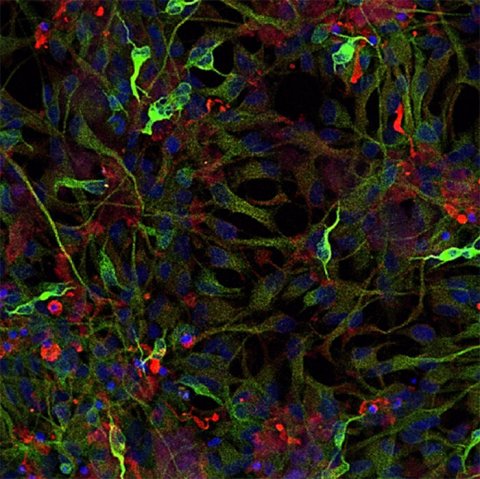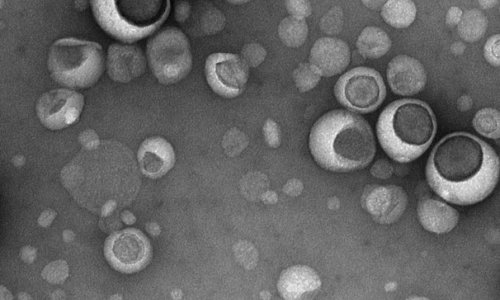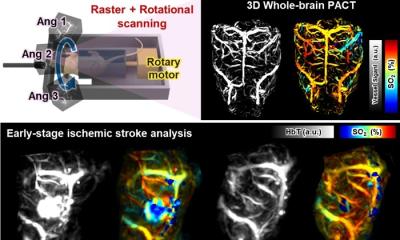News • Promising drug combination
Stroke: new prescription strategy shows great potential
Research conducted at the Health New Orleans Neuroscience Center of Excellence at the Louisiana State University (LSU) reports that a combination of an LSU Health-patented drug and selected DHA derivatives is more effective in protecting brain cells and increasing recovery after stroke than a single drug.
The findings are published in Brain Circulation.
Nicolas Bazan, MD, Ph.D., Boyd Professor, Professor of Neurology and Director of the Neuroscience Center of Excellence at LSU Health New Orleans School of Medicine, and Ludmila Belayev, MD, LSU Health New Orleans Professor of Neuroscience, Neurology, and Neurosurgery, discovered this novel therapeutic strategy for ischemic stroke using an experimental model.

Credit: Louisiana State University
During an ischemic stroke, signals are produced from arriving blood white cells and primary brain immune cells called microglia that cause neuroinflammation leading to a buildup of chemicals that harm the brain. Platelet-activating factor (PAF) accumulates, and inhibition of this process plays a critical role in neuronal survival. Dr. Bazan's earlier studies also showed that in addition to its anti-inflammatory properties, DHA, an essential omega-3 fatty acid, stimulates the production of Neuroprotectin D1 (NPD1), a molecule that protects brain cells and promotes their survival. One complicating factor in developing neuroprotective strategies for stroke are the multiple routes and events that occur in the brain during a stroke, which has been approached mainly by monotherapeutic agents that were mostly unsuccessful.
Because no single therapy has proven effective in treating the complexity of stroke, the team aimed at two different events—blocking pro-inflammatory platelet-activating factor receptors (PAF-R) and activating cell-survival pathways. They found that treatment with LAU-0901, a synthetic molecule discovered in the Bazan lab that blocks pro-inflammatory platelet-activating factor, plus aspirin-triggered NPD1 (AT-NPD1) reduced the size of the damaged area in the brain, initiated repair mechanisms, and remarkably improved behavioral recovery.
These findings provide a major conceptual advance of broad therapeutic relevance for cell survival, brain function and, particularly, stroke and neurodegenerative diseases
Nicolas Bazan
Total lesion volumes were reduced with LAU-0901 plus NPD1 by 62% and LAU-0901 plus AT-NPD1 by 90%. Combinatory treatment with LAU-0901 plus AT-NPD1 improved the behavioral score up to 54% on day three. LAU-0901 and LAU-0901 plus DHA decreased the production of 12-hydroxyeicosatetraenoic acid, a pro-inflammatory mediator. "The biological activity of LAU-0901 and AT-NPD1 is due to specific activation or modulation of signaling pathways associated with the immune system, inflammation, cell survival, and cell-cell interactions," notes Dr. Bazan. "These findings provide a major conceptual advance of broad therapeutic relevance for cell survival, brain function and, particularly, stroke and neurodegenerative diseases."
"We discovered that these novel molecules promote neuronal cell survival with important anti-inflammatory activity," explains Dr. Belayev. "This combinatorial therapy may hold promise for future therapeutic development against ischemic stroke."
According to the Centers for Disease Control and Prevention, someone in the United States has a stroke every 40 seconds. Every 4 minutes, someone dies of stroke. Every year, more than 795,000 people in the United States have a stroke. About 87% of all strokes are ischemic strokes, in which blood flow to the brain is blocked. Stroke-related costs in the United States came to nearly $46 billion between 2014 and 2015. This total includes the cost of health care services, medicines to treat stroke, and missed days of work. Stroke is a leading cause of serious long-term disability. Stroke reduces mobility in more than half of stroke survivors age 65 and over.
Source: Louisiana State University
04.01.2021











